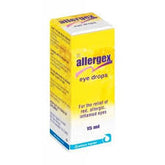Eye floaters
Eye floaters are small, dark, shadowy shapes that float in the field of vision. They can appear as spots, threads, or cobwebs and are more noticeable when looking at a bright, plain background. This article provides a comprehensive overview of eye floaters, including their causes, symptoms, diagnosis, and treatment options.
Definition
Eye floaters are tiny clumps or strands of collagen inside the vitreous, the gel-like substance that fills the inside of the eye. As we age, the vitreous becomes more liquid, and these clumps can cast shadows on the retina, which are perceived as floaters.
Causes
Several factors can contribute to the development of eye floaters:
-
Aging Process:
- As we age, the vitreous gel shrinks and becomes more liquid, causing clumps to form.
-
Posterior Vitreous Detachment (PVD):
- The vitreous gel can pull away from the retina, leading to an increase in floaters.
-
Inflammation:
- Inflammation in the eye (uveitis) can cause debris to enter the vitreous.
-
Bleeding in the Eye:
- Bleeding from blood vessels in the retina can introduce blood cells into the vitreous.
-
Retinal Tears and Detachments:
- Tears in the retina can cause vitreous gel to seep through and create floaters. Retinal detachment is a serious condition that requires immediate attention.
-
Eye Surgery or Eye Injury:
- Surgical procedures or trauma to the eye can lead to floaters.
Symptoms
Common symptoms of eye floaters include:
-
Dark Spots or Threads:
- Seeing small, shadowy shapes that move when the eyes move.
-
Cobweb-like Strands:
- Perceiving web-like strands that drift in and out of the field of vision.
-
Light Flashes:
- Experiencing brief flashes of light, often accompanying floaters and indicating vitreous detachment.
-
Reduced Vision:
- In severe cases, floaters can interfere with vision.
Diagnosis
Diagnosing eye floaters involves several steps:
-
Medical History and Symptom Review:
- Discussing the onset, frequency, and nature of the floaters with a healthcare provider.
-
Comprehensive Eye Examination:
- Dilated Eye Exam: Using eye drops to widen the pupils and examine the vitreous and retina with a special lens.
- Slit-Lamp Examination: A detailed examination of the structures in the front of the eye and the vitreous.
-
Imaging Tests:
- Ocular Ultrasound: If the view of the retina is obscured by blood or other substances.
Treatment
Treatment for eye floaters depends on the underlying cause and severity:
-
Observation:
- Many floaters diminish over time and become less noticeable. Regular monitoring may be sufficient.
-
Vitrectomy:
- A surgical procedure to remove the vitreous gel and replace it with a saline solution. This is typically reserved for severe cases that significantly impair vision.
-
Laser Treatment:
- Laser vitreolysis involves using a laser to break up floaters, making them less noticeable. This is less commonly performed and may not be suitable for all types of floaters.
Complications
Potential complications of eye floaters include:
-
Retinal Tears or Detachment:
- New or sudden onset of floaters, especially with light flashes, may indicate a retinal tear or detachment, which requires immediate medical attention.
-
Vision Impairment:
- In rare cases, floaters can significantly interfere with vision.
When to See a Doctor
Seek medical attention if experiencing:
- A sudden increase in the number or size of floaters.
- Flashes of light.
- A shadow or curtain-like effect over a portion of the visual field.
- Any noticeable changes in vision.
Coping and Support
Living with eye floaters involves:
-
Adapting to Floaters:
- Most people learn to ignore floaters over time.
-
Regular Eye Check-Ups:
- Ensuring any changes in floaters or vision are monitored by a healthcare provider.
-
Education:
- Understanding that floaters are usually benign and learning about signs that warrant urgent attention.
Conclusion
Eye floaters are usually harmless but can sometimes indicate more serious eye conditions. Early diagnosis and treatment are crucial to prevent complications and preserve vision. If you notice a sudden increase in floaters or other changes in your vision, consult with a healthcare provider to determine the appropriate course of action.
In summary, understanding the causes, symptoms, and treatment options for eye floaters can help individuals manage this common condition and maintain good eye health.
- Complication of Eye floaters
- Diagnosis of Eye floaters
- Eye floaters
- Eye floaters myths
- How is Eye floaters treated?
- Medicine for Eye floaters
- Remedies for Eye floaters
- Support for Eye floaters
- Symptoms associated with Eye floaters
- The best British Online Pharmacy
- Top 10 UK Pharmacies
- Treatment for Eye floaters
- What causes Eye floaters
- What is Eye floaters
- Where can I buy medicine for Eye floaters in the UK
- ZimSeller Pharmacy



















